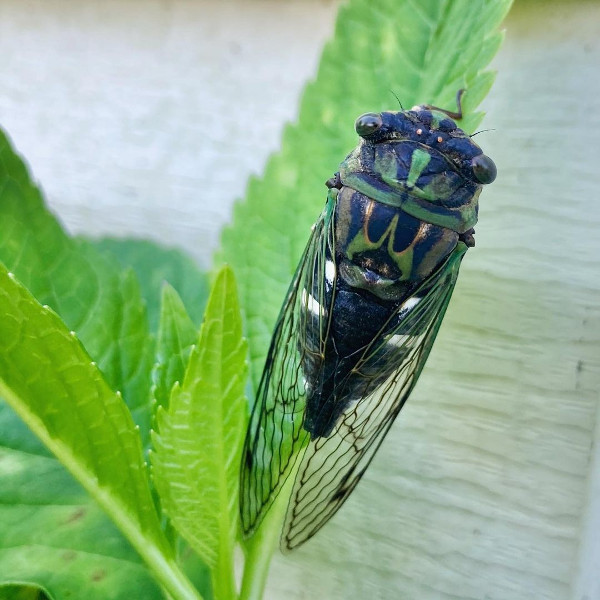
Fly anglers live for hatches, and cicada hatches are no different. When we get on the river and a large mayfly, caddisfly, or stonefly hatch is going on, we know we’re in for a good day of fishing. There’s some great cicada fly patterns listed further down and I touch on how to tie cicada flies. First though, let’s talk about the hatches.
The cicada hatch is every bit as productive as more traditional insect hatches, and gives dry fly anglers an excuse to tie on big gaudy flies. This hatch is productive not only for trout fly anglers, but bass fly anglers as well. Smallmouth bass in particular love cicadas. Many fish species will eat cicadas actually, ranging from carp to even walleye.
Cicadas fall into two main categories.
Periodical Cicadas
Cicadas are known for their periodical hatches. Huge broods of cicadas spanning 7 different species hatch every 13 or 17 years.
The different cicada broods are not all synchronized, and different broods hatch every year. Some broods are bigger than others, and every brood has a geographic range that differs. So anglers looking to take advantage of a cicada hatch need to check if a brood is hatching in their area in any given year. The different broods range across much of north eastern North America.
Annual Cicadas
There are other species of cicadas that have annual life cycles. These cicadas hatch consistently every year. When these bugs emerge, it’s just not in the huge numbers associated with the periodical hatches.
This means that there’s opportunity to fish cicada patterns any year. You’re just not looking at the impressive hatch sizes resulting from the periodical broods.
Cicada Patterns
Good cicada patterns are few and far in between. Most I’ve seen leave alot to be desired. I have come across a few really cool cicada patterns though, and have shared some of them below. Cicadas do range a bit in size, so look up the size (and color) of the cicadas hatching in your region/year and tie appropriately sized bugs.
You don’t want to be caught in a cicada hatch without something in your fly box to match the hatch! Let’s get your fly box filled.
Iggy D’s Foam Cicada
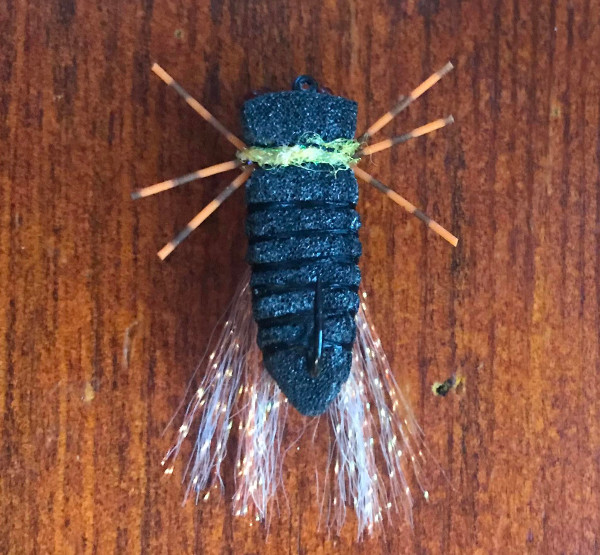
Credit for this foam cicada pattern goes to reddit user /21iggyd. I absolutely love this pattern. You can tell it was designed with functionality in mind. It hits all the key features of a cicada profile without being too complex. Body shape, legs, and wings are all there. The segmentation is the icing on the cake. It also looks to be fairly durable.
I’m also a fan of the fact that the tyer shows the underside of the fly, as that’s what the fish will see in a proper presentation.
Iggy D posted a great how-to tie video for this pattern here.
Dron Lee’s Cicada
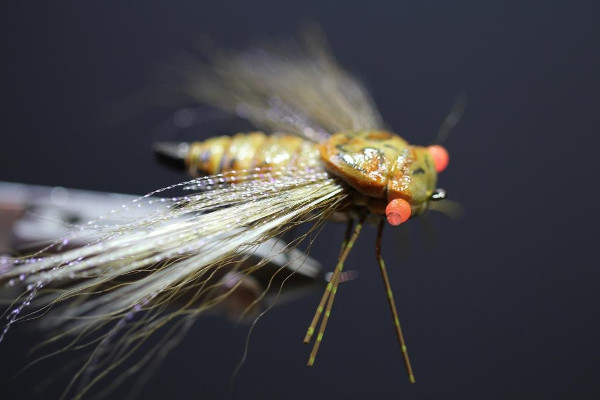
I’ve shared some of Dron Lee’s patterns here before. He’s a skilled fly tyer and certainly has a distinctive style. I really appreciate his patterns as his style differs significantly from my own, so exposes me to some new fly tying techniques. Dron Lee gives a step by step guide on how to fly this fly here.
Project Cicada by Fly Fish Food
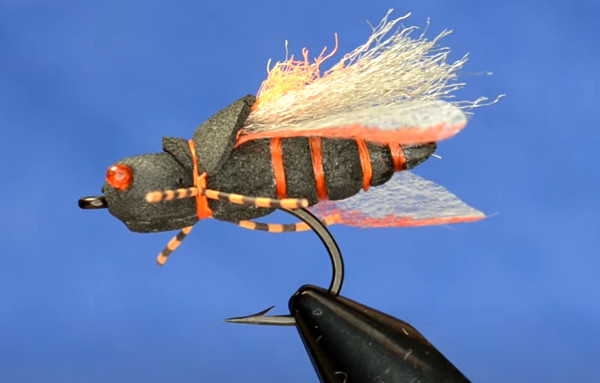
This is a polished cicada imitation. The video actually goes over some improvements made after the fly saw some time on the water. There used to be a deer hair wing, and an additional foam indicator. Both were removed in the interest of making the fly present better, and shed water more easily. When you see/hear flies go through iterations like this, it’s a good indication that the fly tyer knows what they’re doing.
Tying video for this cicada fly pattern can be found here.
Bass Bug Style Cicada
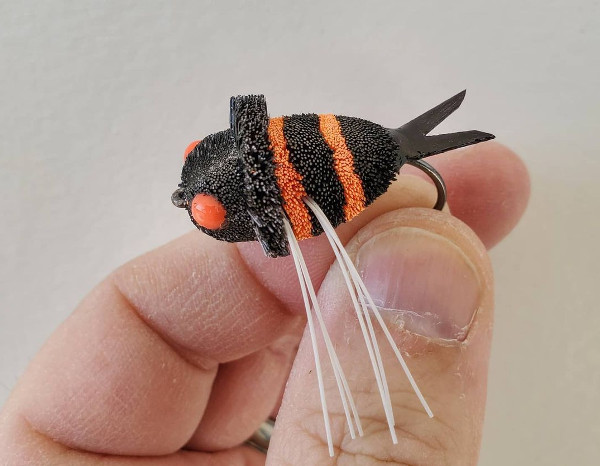
Here’s one for the deer hair spinning enthusiasts. The tight deer hair pack and clean cut on this fly is beautiful. I always have a heck of a time cutting around rubber legs on deer hair bugs, so this tie gets alot of respect from me. Credit to Instagram user panther_branch_bugs for the tie.
I’d happily tie this fly on to target smallmouth bass.
Rubber legged deer hair cicada
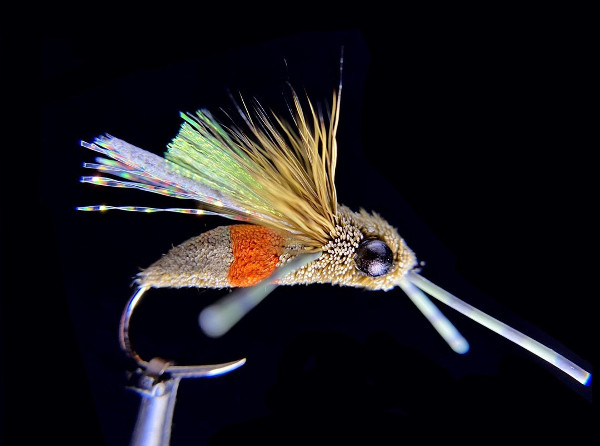
Another Deer Hair (Amazon Link) cicada! No specific name for this pattern though. This fly has a slimmer profile to imitate a smaller cicada species, but you could trim the deer hair to be as thick or thin as you want. The hot spot behind the wing is a nice touch.
Deer Hair Cicada #2
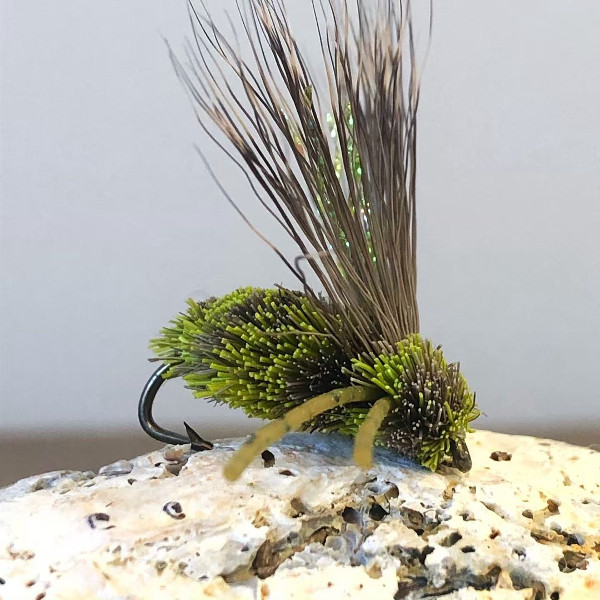
This pattern was tied by Instagram user cribbsandfish. I like this because it’s another practical fly, that doesn’t do more than it needs to. The mottled coloration in the deer hair is also quite well done.
I know loosely packed deer hair doesn’t look a clean as tightly packed deer hair, but it does offer advantages. This fly is less buoyant than the densely packed ones mentioned earlier, which mens it’ll sit lower in the water film. This suggests the bug is water-logged, rather than floating high on the surface. This can be just the thing that entices a picky fish to strike. I’m planning on tying up a few of these for my own fly box.
Wally Wing Style Cicada
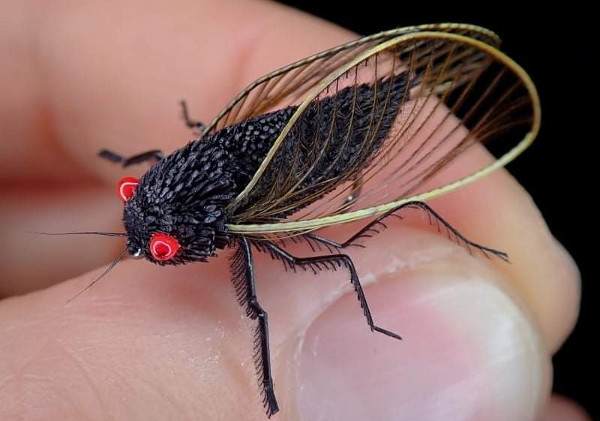
Whoever tied this is just showing off. I’m kidding of course, this is an awesome tie. Deer hair is done well, legs are amazing, and the wally wings are obviously the highlight of the fly.
Those familiar with tying wally wings will notice something funky is going on here… they’re facing away from each other! Did the tying tie in two separate wings and cut off half of each, or somehow reverse the orientation of the feather? Perhaps the feather was tied on the bottom and pulled upwards? Whatever the method, it’s more complex than a typical walleye wing, and deserves credit!
While this is an on-point imitation, I’d almost prefer to keep it as a display fly! It’s certainly going to be less durable than the flies listed above, despite being one of the most impressive ties on this list.
Credit unknown. Please let me know in the comments if you know who to credit and I’ll add it in here!
Ammo_Flies Deer Hair Cicada

This is a pattern tied by Instagram user Ammo_Flies. Another very impressive cicada fly. The deer hair work on this is exceptional. The hackle wings are also unique among the patterns here, and I think most realistic mimic an actual cicada.
Looking at it, it also probably takes the longest to tie out of all the patterns listed here. Certainly one of the most impressive ties on this list.
Alternatives
If you find yourself in the middle of a cicada hatch don’t worry! there are a few flies that may work as substitutes. Big hoppers can do an alright job of imitating cicadas, especially if they were tied on the beefy side. Think a big foam hopper pattern.
Smallmouth bass poppers (either foam or deer hair bugs), or appropriately sized gurglers will also do an alright job of imitating cicadas.
Hopefully though this list gives you some ideas to tie your own fly patterns, or and idea of what fly patterns you want to buy to match the cicada hatch.

4 thoughts on “7 Cicada Fly Patterns for an Amazing Hatch”